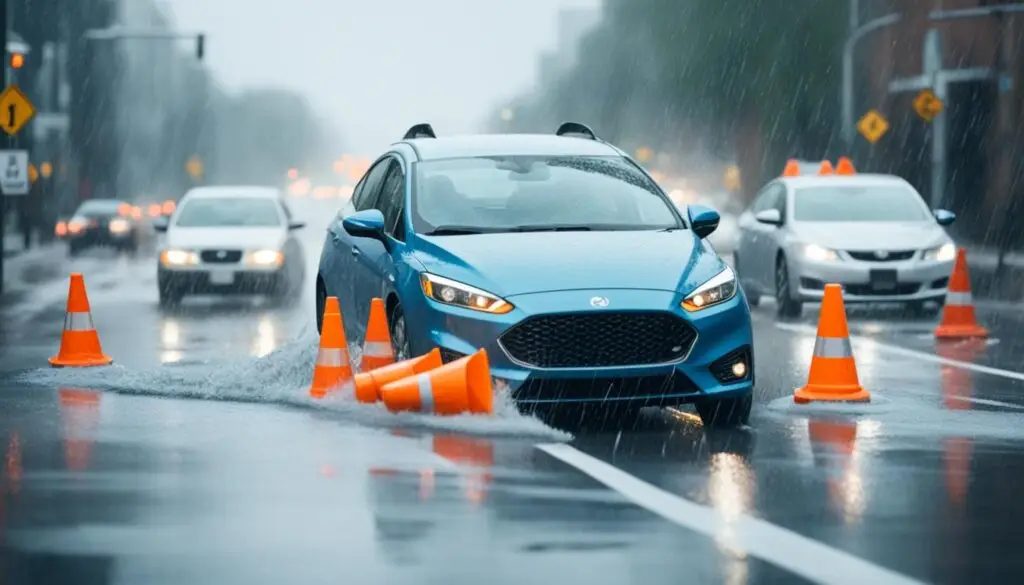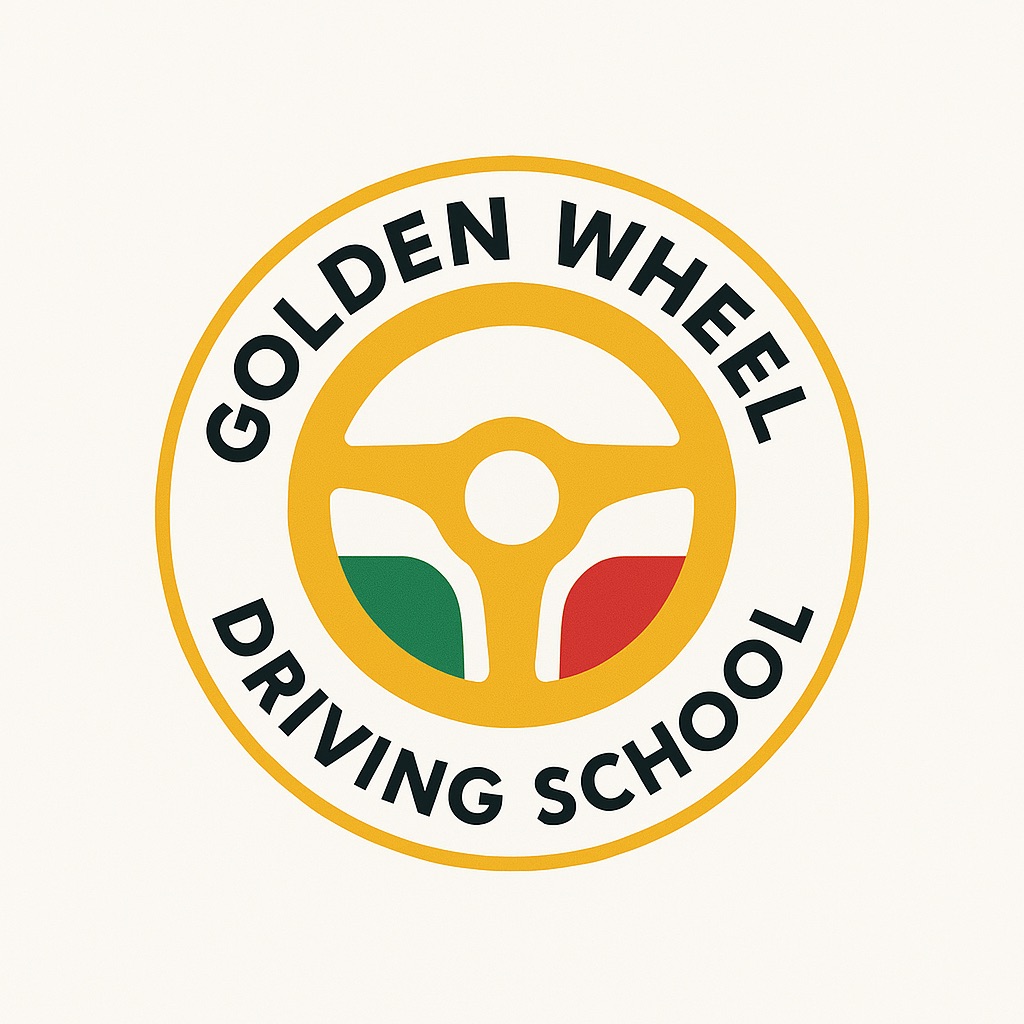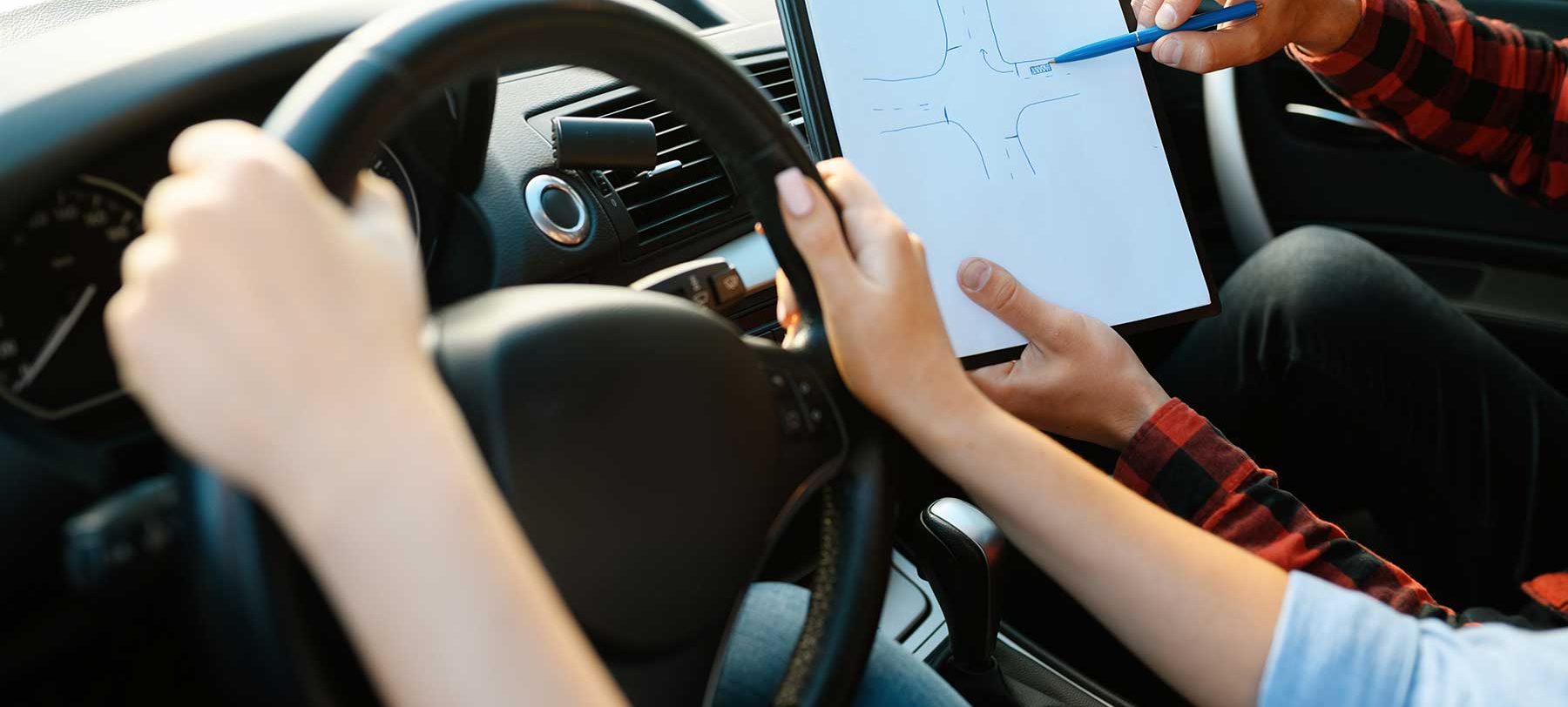Teaching your teenager to drive is both thrilling and challenging. It’s key to support and guide them well to keep them safe on the road. This guide offers tips and strategies for teaching your teen to drive safely and confidently.
Key Takeaways
- Establish a foundation of trust and confidence with your teen driver.
- Set a positive example by modeling safe and responsible driving behaviors.
- Prepare thoroughly for the learning process, covering vehicle familiarization and basic driving skills.
- Teach teens the rules of the road and how to navigate challenging driving situations.
- Encourage the development of defensive driving skills to anticipate and respond to potential hazards.
The Importance of Parental Guidance
Parental guidance is key when teaching teens to drive. As a parent, you shape your child’s driving habits and help them learn to drive safely. By building trust and confidence, you create a supportive space for them to learn.
Building Trust and Confidence
Learning to drive can be thrilling and scary for teens. It’s important to build trust and open communication. Listen to their worries, reassure them, and tackle challenges together. This teamwork makes your teen feel strong and ready to drive well.
Setting a Positive Example
Your driving habits set an example for your teen. Show them how to drive safely, kindly, and responsibly. This teaches them important lessons that last a lifetime. With consistent practice and positive feedback, they’ll learn to drive safely and wisely.
| Parental Guidance Strategies | Benefits |
|---|---|
| Building Trust and Confidence | Empowers teens, creates a supportive learning environment |
| Setting a Positive Example | Teaches valuable driving skills and responsible habits |
“Effective parental guidance is the foundation for developing safe and confident young drivers.”
Being a supportive and active parent helps your teen become a responsible driver. The journey to learn driving rules is a team effort. Your guidance and support are crucial.
Preparing for the Learning Process
Starting to teach your teen to drive is a big step. It’s important to get ready for this journey. This preparation helps both you and your teen feel ready and confident for what’s to come.
First, learn about the learner’s permit rules in your state. This will help you know what paperwork, tests, and training your teen needs before driving. Knowing these rules makes planning easier and sets clear goals for when your teen will start driving.
Then, plan regular practice times. Being consistent is key to learning to drive well. Set aside time each week that works for both of you. This way, learning to drive won’t cause stress or arguments.
- Understand your state’s learner’s permit requirements
- Schedule regular practice sessions
- Ensure the vehicle is properly equipped for driver training
Also, make sure the car you use for practice is safe and ready for your teen. This means having things like extra mirrors, adjustable seats, and big pedals. Check the car over and teach your teen how everything works. This makes learning safer and more comfortable.
| Preparation Step | Importance |
|---|---|
| Understand learner’s permit requirements | Ensures you follow all legal guidelines and set appropriate expectations |
| Schedule regular practice sessions | Builds consistency and reinforces driving skills |
| Equip the vehicle for driver training | Creates a safe and comfortable learning environment |
By getting ready in these ways, parents can make teaching their teens to drive a success. This helps your teen become a confident and careful first-time drivers.
“The journey of teaching your teen to drive may seem daunting, but with the right preparation, you can transform it into a rewarding experience that will last a lifetime.”
Mastering the Basics
Teaching your teen safe driving habits starts with mastering the basics. This guide will help you teach your teen the essential skills. It begins with getting familiar with the vehicle and moves on to learning how to start and stop the car.
Vehicle Familiarization
Start by making your teen comfortable with the vehicle they’ll drive. Have them check out the dashboard and learn where all the controls are. They should also practice adjusting the seat, mirrors, and steering wheel to fit them.
This hands-on experience helps them understand the car better. It also makes them feel more in control of driving.
Starting and Stopping
- Starting the car: Teach your teen how to start the engine right. This includes checking the gear, applying the brake, and turning the key or pressing the start button.
- Stopping the car: It’s important to brake smoothly and in control. Show your teen how to slowly press the brake to stop safely, keeping an eye on what’s around them.
- Parking: Teach your teen different parking methods like parallel, perpendicular, and angle parking. Give them lots of practice in safe spots.
Mastering these basic skills will help your teen feel confident and ready for the road. Remember, be patient and keep practicing with them. This will help your teen become a skilled and careful driver.
Teens to Drive: Rules of the Road
As teen drivers start hitting the roads, it’s key they know the rules. This includes traffic laws, road signs, and how to drive safely. Parents should teach their teens these important safe driving habits.
Understanding traffic laws is a big part of safe driving. Teens need to know what road signs mean, follow speed limits, and give way to others. These basics help teens drive responsibly and legally.
- Teach teens about common road signs like stop signs and speed limit signs.
- Explain why it’s important to follow traffic signals and laws. This includes yielding and avoiding dangerous driving.
- Talk about why speeding is risky and how to keep a safe speed for the road conditions.
Driving etiquette and being polite on the road are also important. Topics include keeping a safe distance, using turn signals, and watching out for other drivers.
| Safe Driving Tip | Importance |
|---|---|
| Maintain a safe following distance | Allows for enough time to react and stop if needed |
| Use turn signals | Tells other drivers what you plan to do, lowering the chance of accidents |
| Be aware of your surroundings | Helps you see dangers and react quickly |
By teaching teen driver road safety, driving with teenagers, and safe driving tips for teens, parents help their young drivers learn to drive safely and responsibly.
Navigating Challenging Situations
Teenagers starting to drive will face tough driving conditions. It’s important to teach them how to handle these situations safely. We’ll look at how to deal with bad weather and night driving.
Inclement Weather Driving
Driving in bad weather like heavy rain, snow, or fog can be scary for new drivers. Tell your teen to slow down, keep a safe distance from others, and watch out for dangers. Make sure they practice these tips in a safe place before hitting the road.
When visibility is poor, tell your teen to:
- Turn on their headlights to see better and be seen by others
- Avoid sudden stops or changes in lane to keep control
- Slow down gradually to avoid losing control or traction
Night Driving
Night driving can be tough for teens. Talk about the importance of being alert, driving at a safe speed, and not getting distracted. It’s crucial to keep their eyes on the road and not stare at oncoming headlights.
To boost your teen’s confidence at night, suggest they:
- Adjust their mirrors and seat for better visibility
- Keep their lights and windows clean for more light
- Don’t use their phone or do anything that takes their focus off the road
By teaching your teens how to handle bad weather and night driving, you’re helping them become safe and confident drivers.
Developing Defensive Driving Skills
As teens start driving, parents should focus on teaching them defensive driving skills. These skills are key to avoiding accidents and staying safe on the road.
Defensive driving means being ready for dangers and acting fast when needed. Parents can help by teaching their teens to stay alert and think quickly. This helps them handle the road’s challenges safely.
- Maintain a safe following distance: Tell your teen to keep a good gap from the car in front. This gives them time to react if the car stops suddenly.
- Scan the environment: Teach your teen to always check the road, sides, and mirrors for dangers like pedestrians or other cars.
- Anticipate the actions of others: Encourage your teen to guess what others might do and be ready to act.
- Practice defensive driving techniques: Work with your teen on skills like quick braking, avoiding obstacles, and staying in control in tough situations.
| Defensive Driving Technique | Description |
|---|---|
| Maintaining a Safe Following Distance | Keep a good gap from the car in front to have time to react if it stops suddenly. |
| Scanning the Environment | Always look for dangers in front, sides, and mirrors to stay safe. |
| Anticipating the Actions of Others | Be ready for others who might suddenly move into your path. |
| Practicing Defensive Driving Techniques | Learn skills like quick braking and staying in control in tough situations. |
By teaching these habits, you can make your teen more confident and safe driving. This reduces the chance of accidents and helps them stay safe. With your help, your teen will learn important driving skills for the future.

Building Confidence and Independence
As teen drivers get more experience, it’s key to slowly introduce them to new driving situations. This helps build their confidence and gets them ready for the road’s challenges. Here are some ways parents can help their teens through this.
Gradual Exposure to New Environments
Start by having your teen drive in quiet, safe places like residential streets or empty parking lots. As they get more comfortable, slowly add more challenging roads, highways, and different traffic. This way, they learn the skills and confidence needed for tougher driving situations.
- Start with familiar, low-risk areas and gradually increase difficulty
- Expose your teen to different road types, traffic patterns, and weather conditions
- Encourage your teen to practice driving in a variety of settings, from rural to urban areas
Remember, the goal is to build your teen’s confidence and independence as a driver, not to overwhelm them. Patience and a supportive approach are key to helping them become a safe and responsible first-time driver.
“The journey of a thousand miles begins with a single step. Gradually introducing new driving challenges will help your teen gain the skills and confidence they need to become a safe and independent driver.”
Staying Calm and Patient
Teaching a teen to drive can be both exciting and stressful for parents and students. It’s key for parents to stay calm and patient. This helps your teen learn the skills and confidence needed to be a safe driver.
Setting realistic expectations is a good strategy. Learning to drive takes time and practice. Don’t expect your teen to get everything right away. Celebrate their small wins and encourage them to keep improving.
Clear communication is also vital. Give feedback that is encouraging and non-judgmental. Criticizing every mistake can make your teen lose confidence and interest in driving.
- Take deep breaths and remain calm when your teen makes a mistake.
- Offer guidance and suggestions in a patient, supportive manner.
- Encourage your teen to ask questions and express any concerns they may have.
The parent-teen driving experience is a collaborative journey. By staying calm and patient, you help your teen feel empowered to learn and grow. This makes them a safe and confident driver. It also helps make the roads safer for everyone.

Celebrating Milestones and Progress
As teens improve in their parent guide to teen driving, it’s key for parents to celebrate their wins. Acknowledging their efforts in learning road rules can boost their motivation. It helps them stay focused and confident in becoming safe drivers.
One way to celebrate is with a special outing that highlights their skills. This could be a family trip to a nearby spot, letting them practice navigating new areas. Or, you might plan a dinner to mark big achievements, like finishing a driver’s course or their first highway drive.
Offering parental guidance for new drivers means giving positive feedback and encouragement. Acknowledge their small victories, like signaling turns or keeping a safe distance. Let them know you’re proud of their progress. This boosts their confidence and strengthens the teaching safe driving habits you’ve shared.
| Milestone | Celebration Idea |
|---|---|
| Completion of driver’s education course | Dinner at the teen’s favorite restaurant |
| First solo drive on the highway | Family road trip to a nearby destination |
| Consistent safe driving habits | Special outing or activity that reinforces their skills |
Celebrating your teen’s achievements not only highlights safe driving but also builds pride and confidence. This encourages them to keep improving their skills and confidence behind the wheel.
“Celebrating our teen’s driving milestones was a game-changer. It kept them motivated and confident, and strengthened our bond as we navigated this new chapter together.”
Conclusion
Teaching your teen to drive is a rewarding journey with both ups and downs. This guide offers valuable advice to help your teen become a confident, safe driver. You can build trust, set a good example, and support them through challenges and successes.
Remember, teaching teens to drive needs patience, consistency, and a focus on safe habits. Putting your teen’s safety first helps them develop the skills and judgment to drive well. Enjoy the process, celebrate their achievements, and be proud of your role in teaching them to drive responsibly.
When your teen starts driving, know that your hard work will show. They will become a skilled, confident driver ready for independence. With your help, they’ll be a safe driver, inspiring others and helping make the roads safer for everyone.







